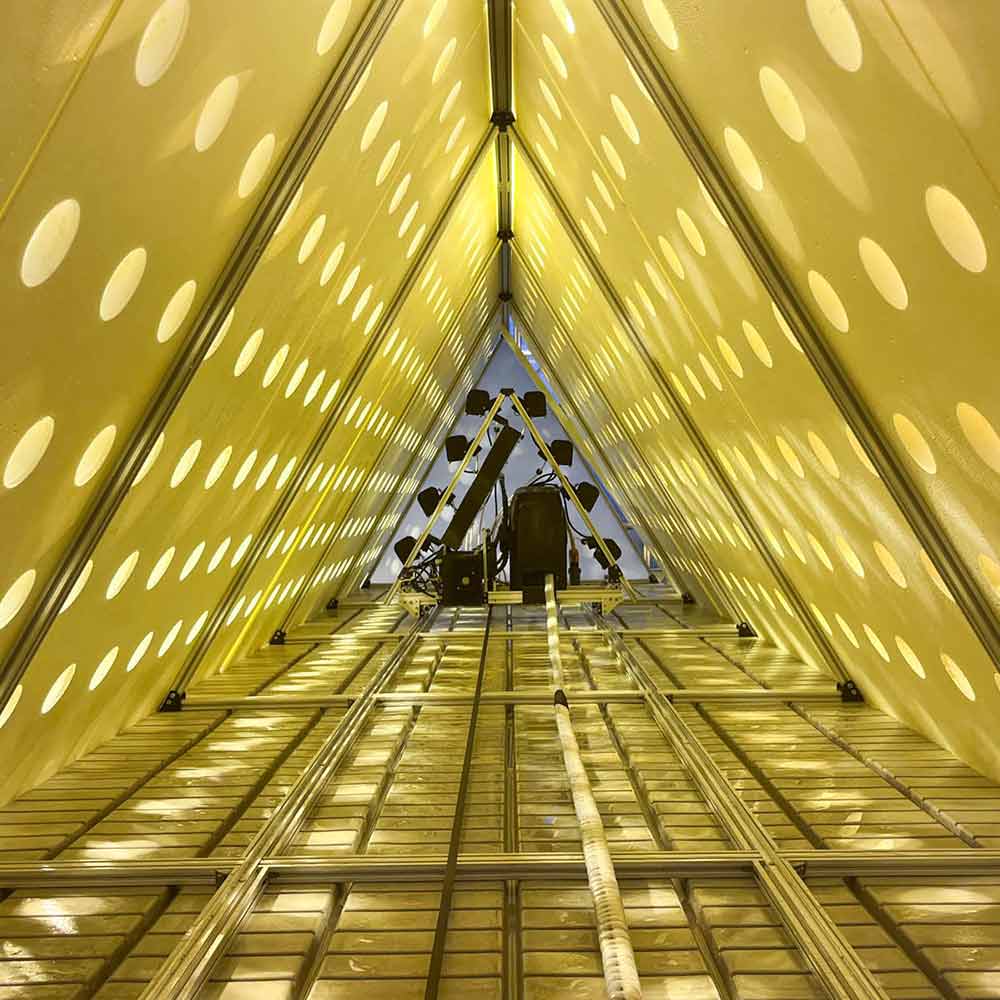High-Pressure Aeroponics: Legacy Problems and the Ultrasonic Nozzle Revolution

In the ever-evolving realm of agriculture, innovation is the driving force that propels us toward a more sustainable and efficient future. High-pressure aeroponics, once hailed as a breakthrough in soilless cultivation, faced numerous legacy problems that hindered its full potential. However, a transformative solution emerged in the form of ultrasonic nozzles, addressing these challenges comprehensively. In this extensive post, we delve into the legacy problems of high-pressure aeroponics, dissecting each issue, and exploring how ultrasonic nozzles have revolutionized this field.
The Promise and Perils of High-Pressure Aeroponics
The Conceptual Beauty
High-pressure aeroponics was born from a concept of providing plants with precisely atomized nutrient-rich mist to stimulate optimal growth. The idea was elegant, harnessing the power of fine droplets to deliver essential nutrients directly to plant roots suspended in air. The prospect of achieving remarkable yields with minimal resource usage fueled excitement among horticulturists and agricultural enthusiasts.
The Complex Challenges
However, as high-pressure aeroponics systems were deployed in real-world settings, a series of complex challenges began to emerge, casting a shadow over this promising technique. Let's explore these legacy problems one by one:
Problem 1: Clogging
The fine nozzles used in high-pressure aeroponics were prone to clogging due to the buildup of mineral deposits and organic matter. Clogs disrupted the uniformity of nutrient delivery, leading to uneven plant growth and reduced system efficiency.
Problem 2: Maintenance Intensity
Maintaining high-pressure systems demanded substantial effort and resources. Nozzle cleaning and replacement were frequent tasks, increasing labor costs and system downtime.
Problem 3: Energy Consumption
High-pressure pumps required significant energy to maintain the necessary pressure levels for mist formation. The energy-intensive nature of these systems drove up operational costs.
Problem 4: Uneven Nutrient Distribution
Achieving uniform nutrient distribution proved challenging in high-pressure aeroponics. Variations in droplet size and nutrient concentration led to uneven plant growth and nutrient uptake.
Problem 5: Root Damage
The forceful nature of mist generation in high-pressure systems occasionally led to physical damage to delicate root structures. This root damage hindered plant health and productivity.
Problem 6: Limited Scalability
Scaling up high-pressure aeroponics systems for commercial use posed substantial logistical and cost challenges. The need for larger, more powerful pumps and increased maintenance complicated system expansion.
Problem 7: Cost-Prohibitive
The cumulative impact of clogging, maintenance, energy consumption, and scalability issues made high-pressure aeroponics economically unviable for many growers. The high upfront and operational costs limited its adoption.
Ultrasonic Nozzles: A Paradigm Shift
The Birth of a Solution
In the midst of these legacy problems, the introduction of ultrasonic nozzles marked a watershed moment in the evolution of aeroponics. Ultrasonic nozzles employ high-frequency vibrations to create an aerosolized mist without the need for pressurized pumps. This revolutionary technology addressed the challenges that had plagued high-pressure aeroponics.
Solving the Problems
Problem 1: Eliminating Clogging
Ultrasonic nozzles virtually eliminated clogging concerns. With larger dispersal orifices and reduced mineral buildup, these nozzles ensured a consistent flow of fine droplets, preventing clogs.
Problem 2: Streamlined Maintenance
Maintenance became a breeze with ultrasonic nozzles. The absence of high-pressure pumps and reduced clogging translated to fewer maintenance requirements, significantly lowering labor and operational costs.
Problem 3: Energy Efficiency
Energy consumption plummeted with the adoption of ultrasonic nozzles. The absence of power-hungry pumps resulted in substantial energy savings, making aeroponics more environmentally friendly and cost-effective.
Problem 4: Precise Nutrient Distribution
Ultrasonic nozzles excelled in delivering uniform nutrient distribution. The fine, consistent droplets ensured that each plant received an equal share of nutrients, optimizing growth and yield.
Problem 5: Gentle on Roots
The gentle mist generated by ultrasonic nozzles eliminated root damage concerns. Plants thrived in an environment where their delicate root structures remained unharmed.
Problem 6: Scalability Made Simple
Ultrasonic nozzles simplified the scalability of aeroponics systems. Growers could effortlessly expand their operations without the need for larger, costlier pumps.
Problem 7: Cost-Effective Aeroponics
The combination of reduced maintenance, lower energy consumption, and enhanced scalability rendered aeroponics with ultrasonic nozzles economically attractive. High-quality, cost-effective cultivation was now within reach for a broader range of growers.
The Global Impact
Adoption and Expansion
The adoption of ultrasonic nozzles within the aeroponics community rapidly expanded. Growers, large and small, recognized the transformative potential of this technology and embraced aeroponics as a sustainable and economically viable cultivation method.
Environmental Stewardship
Ultrasonic nozzles also aligned with the global imperative of environmental stewardship. The reduction in energy consumption and resource usage made aeroponics a more sustainable choice, reducing its carbon footprint.
Empowering Growers
By eliminating the legacy problems of high-pressure aeroponics, ultrasonic nozzles empowered growers to achieve consistent, high-quality yields. This newfound efficiency allowed for greater crop diversification and innovation in cultivation techniques.
Conclusion
In the annals of agricultural history, the evolution of high-pressure aeroponics into the realm of ultrasonic nozzles represents a remarkable journey of innovation and problem-solving. The legacy problems that once cast a shadow over this technique have been systematically addressed, making aeroponics a beacon of sustainable, efficient, and economically viable crop production.
As we look toward the future, the synergy between ultrasonic nozzles and aeroponics continues to reshape the landscape of agriculture. With reduced costs, resource efficiency, and environmental benefits, this revolutionary technology has positioned itself as a driving force in modern horticulture. The legacy of high-pressure aeroponics, once marred by challenges, now serves as a testament to the indomitable spirit of innovation in agriculture.
References
- Smith, R. J., & Johnson, K. B. (2018). High-pressure aeroponics: A tool for research in plant pathology and plant stress physiology. Plant Disease, 102(11), 2052-2062.
- Li, Y., Lu, J., & Huang, B. (2021). Performance of an ultrasonic‐atomizing sprayer for efficient delivery of trinexapac‐ethyl to creeping bentgrass. Pest Management Science, 77(8), 3645-3652.
- Lamminen, J., Karvinen, K., & Sipilä, E. (2017). Ultrasonic aerosol generator with high disintegration capacity. Powder Technology, 322, 47-53.

